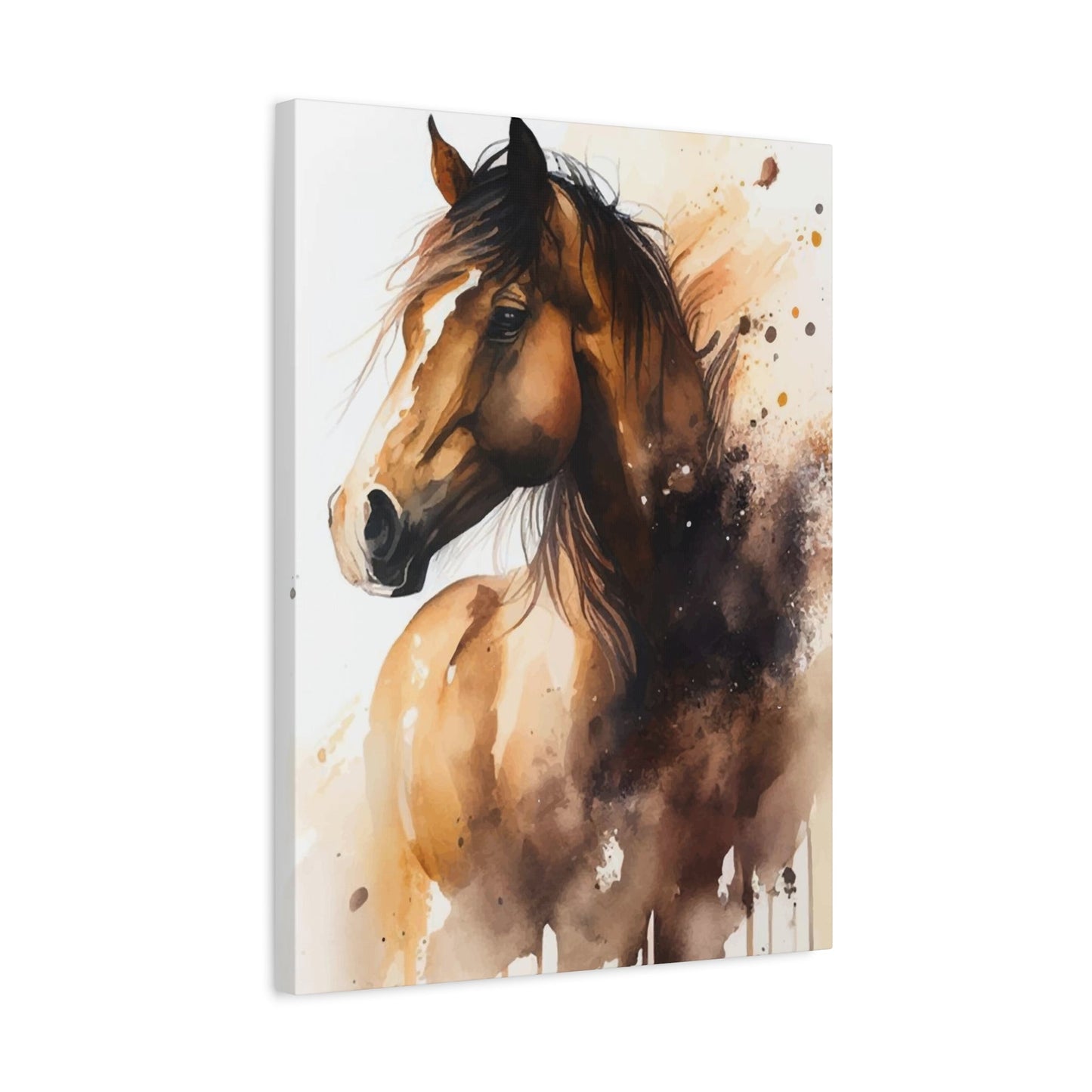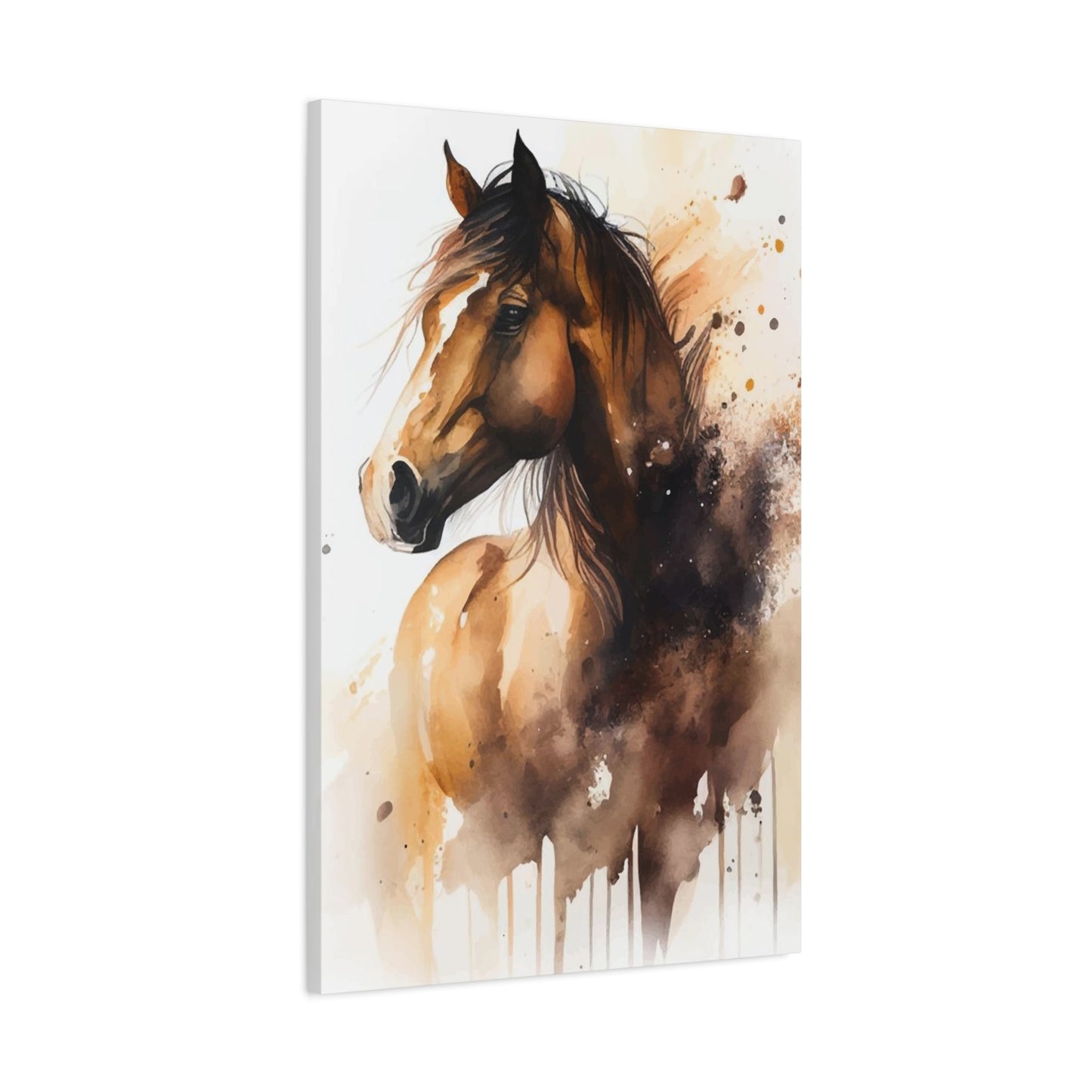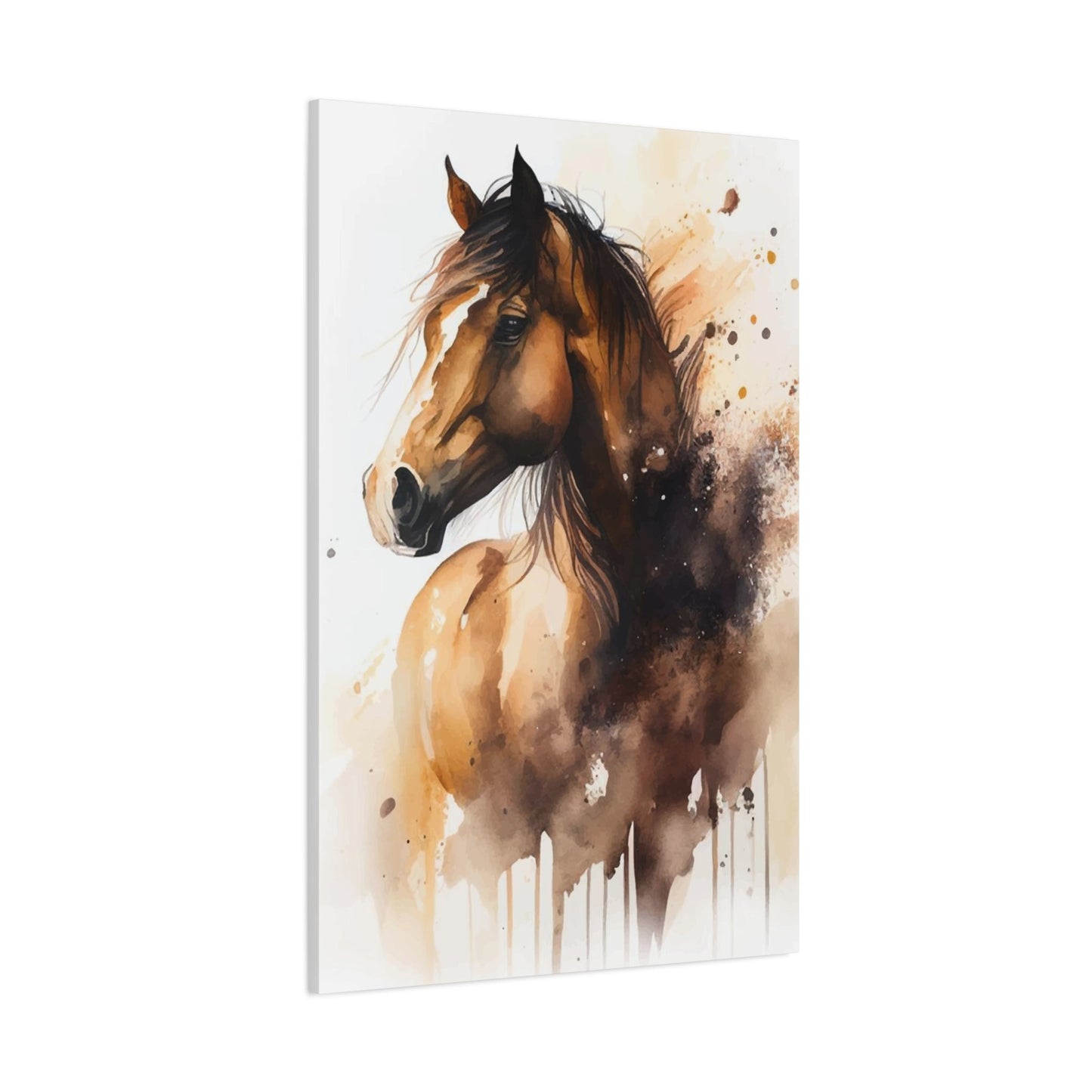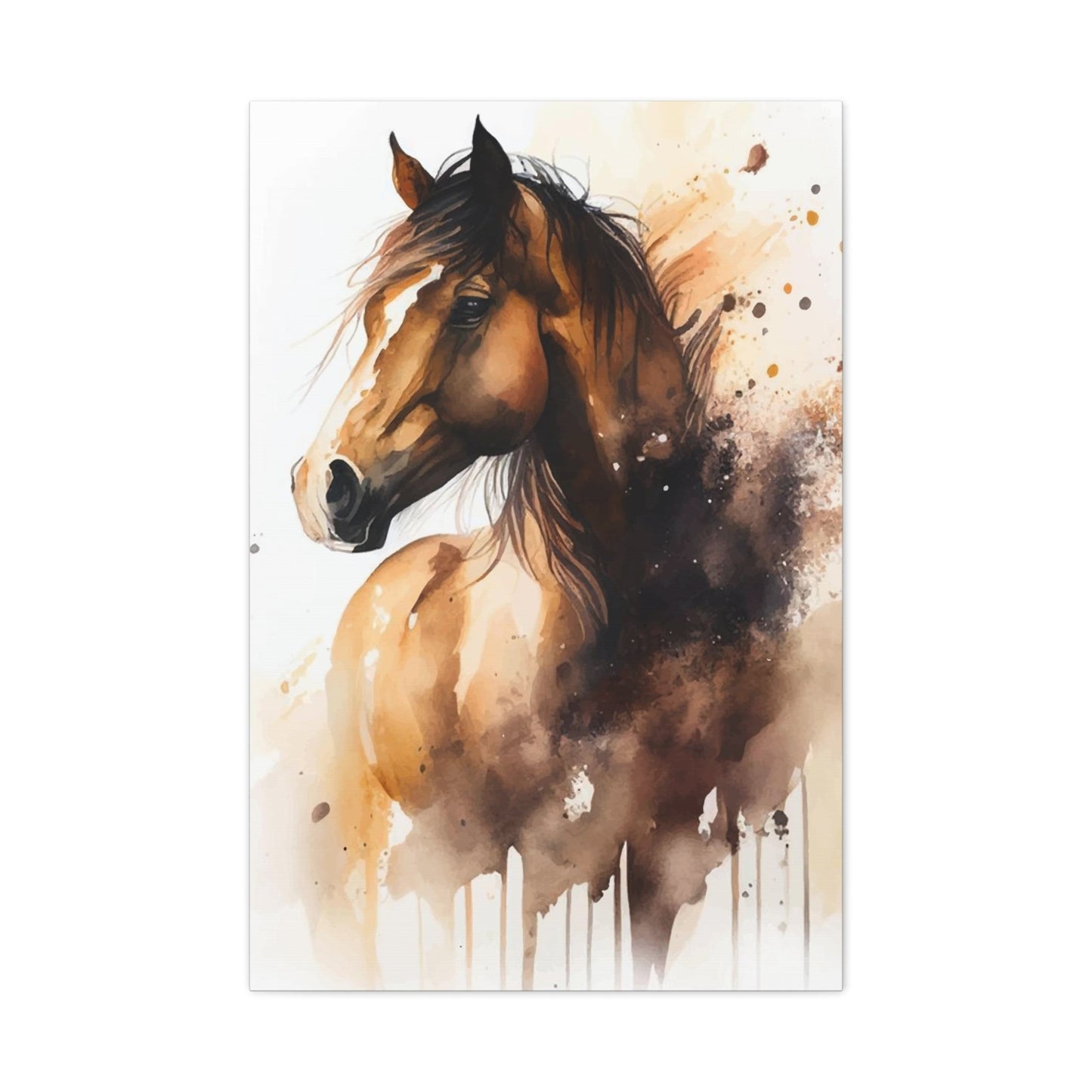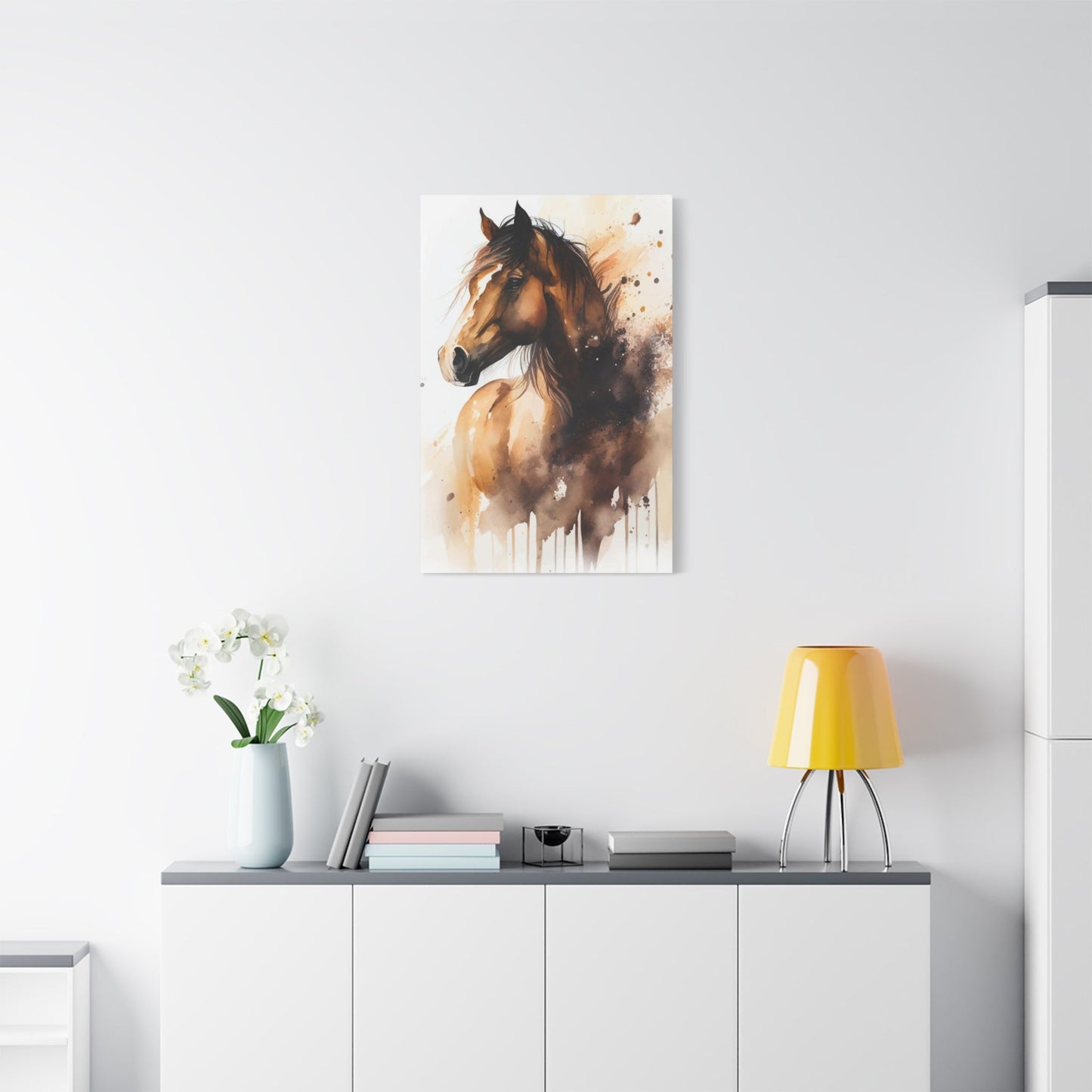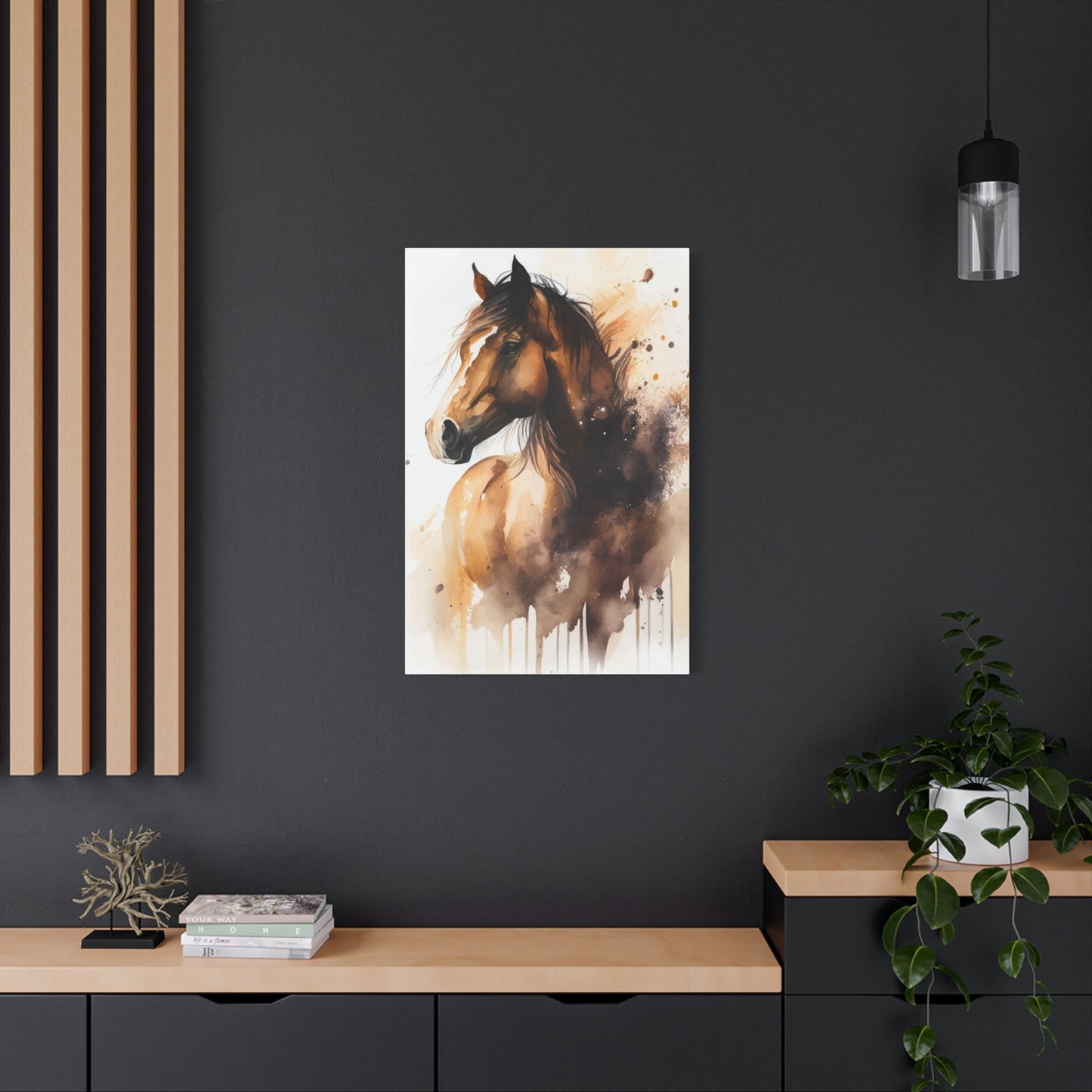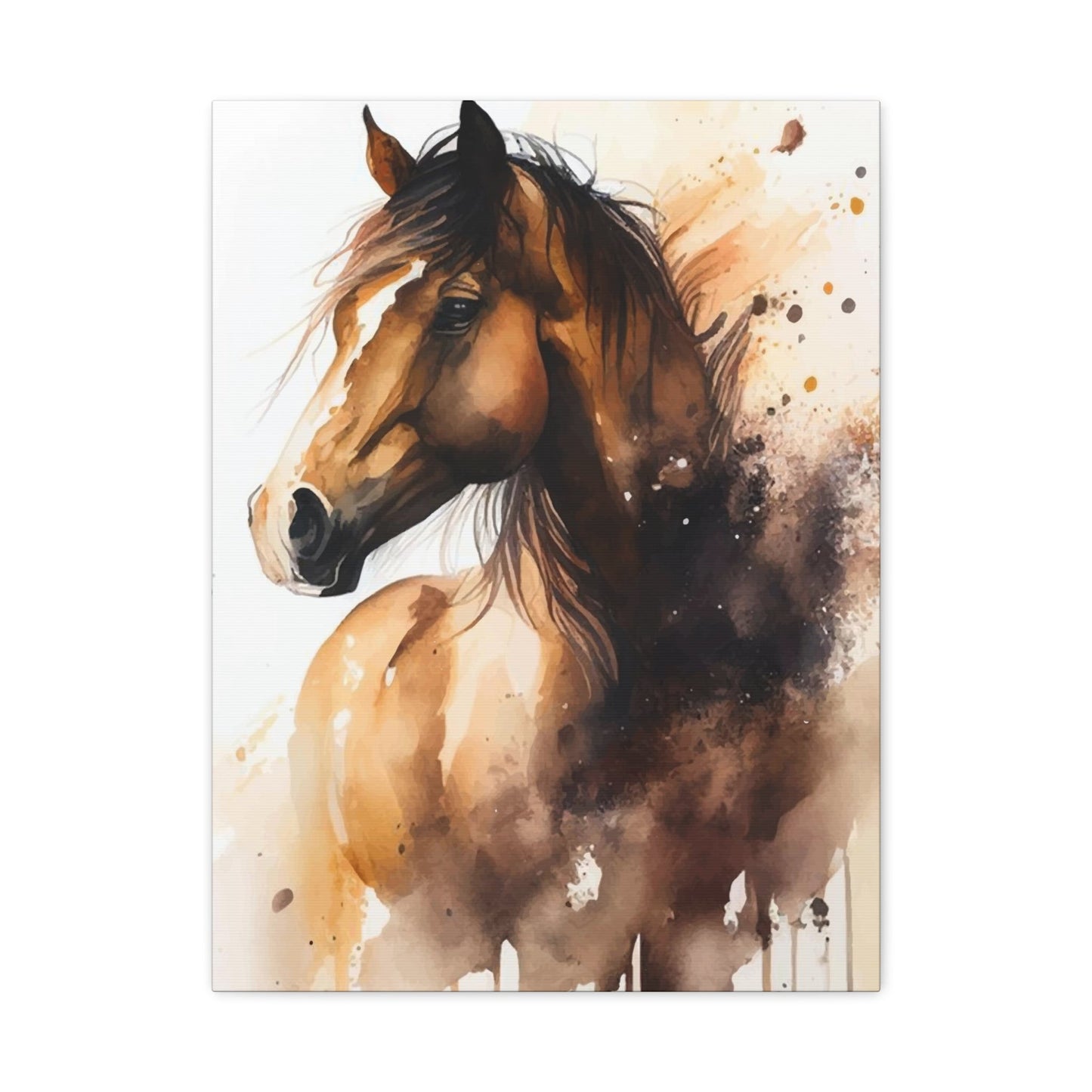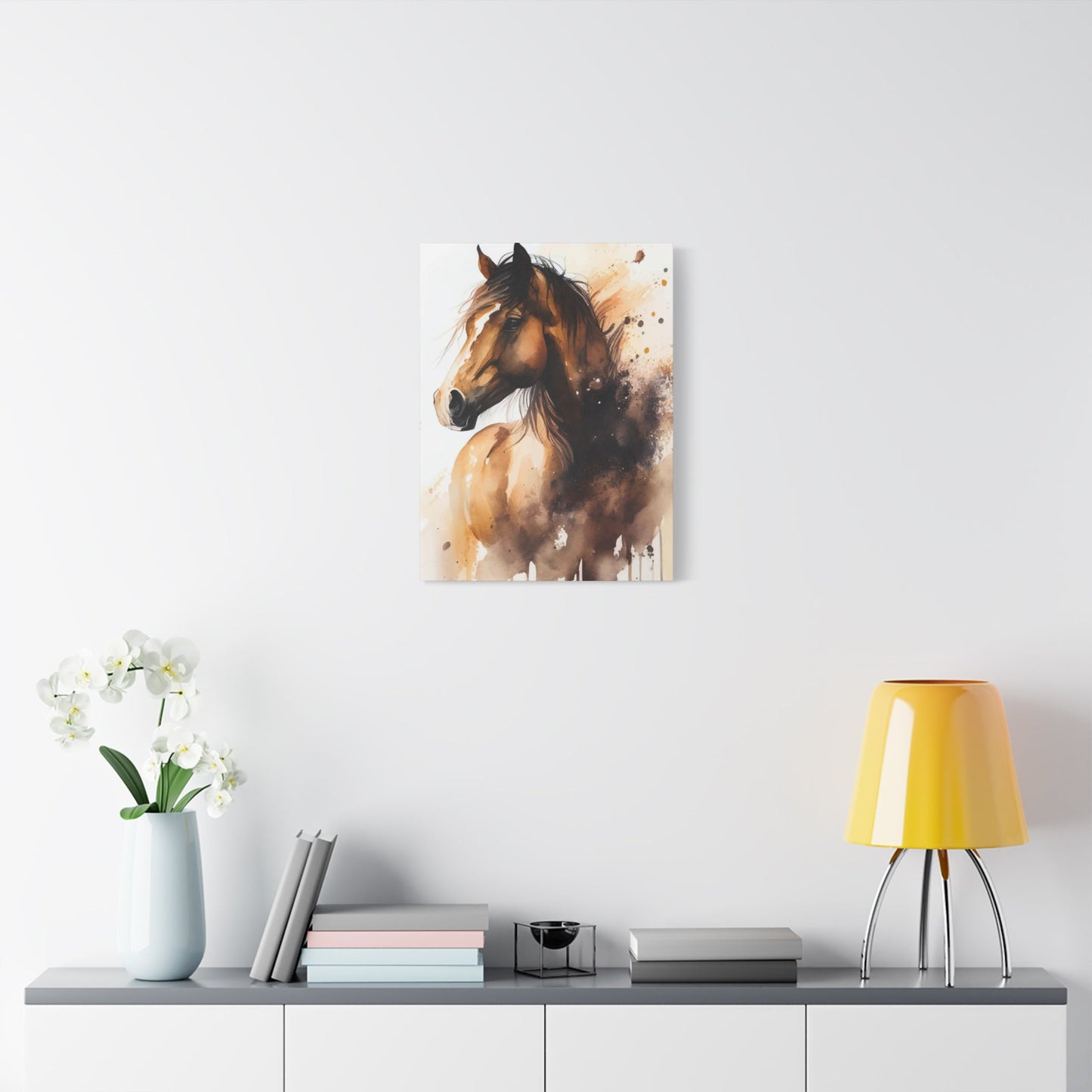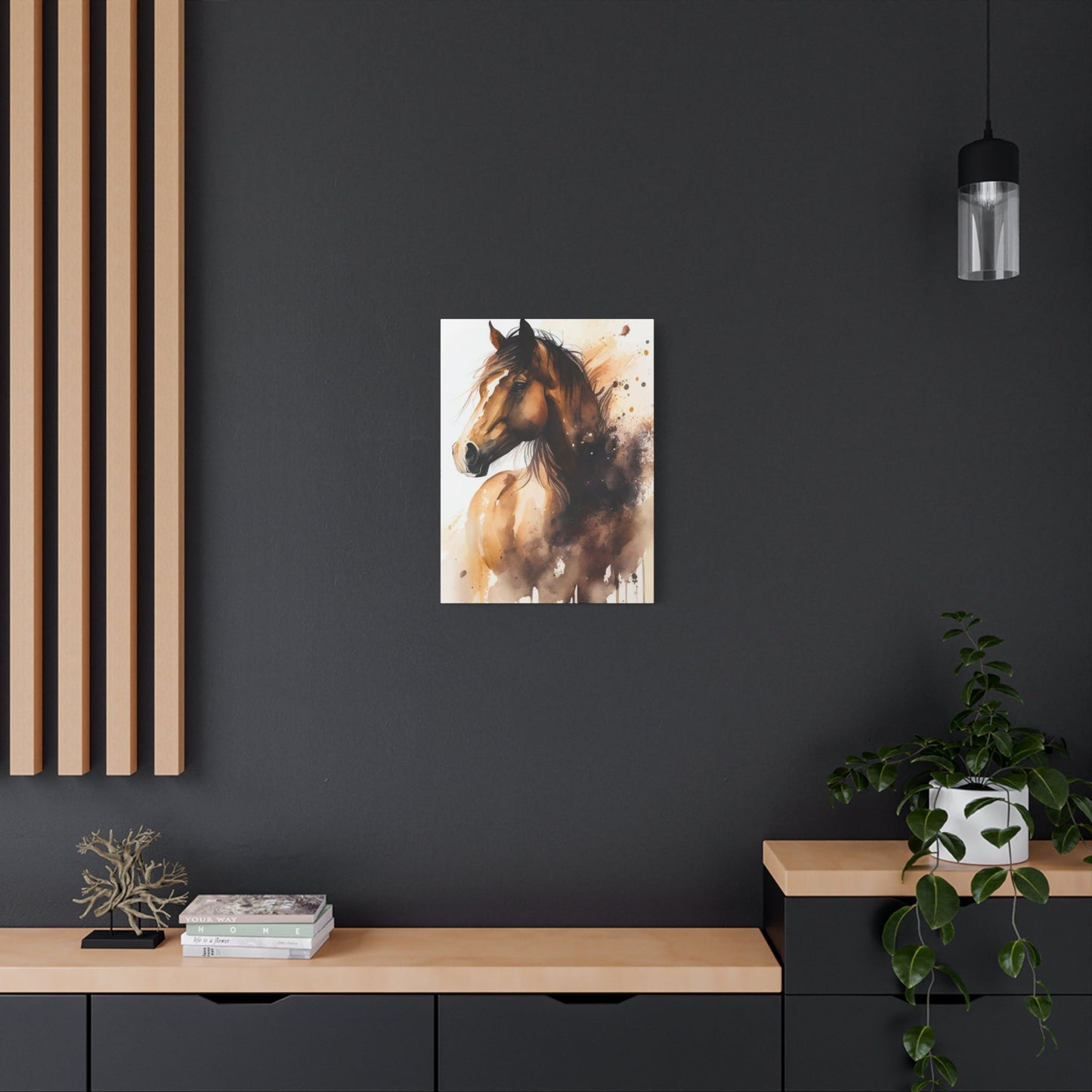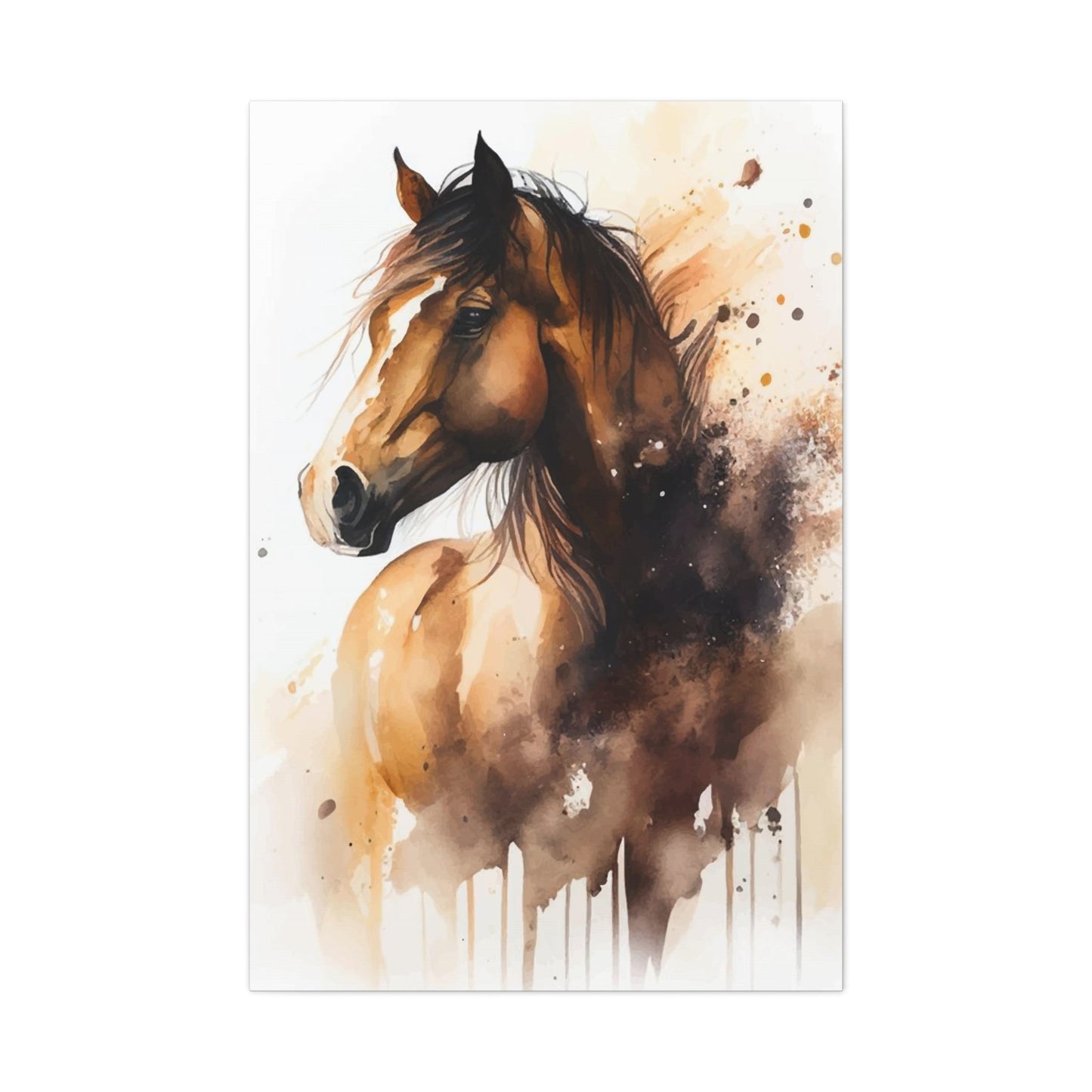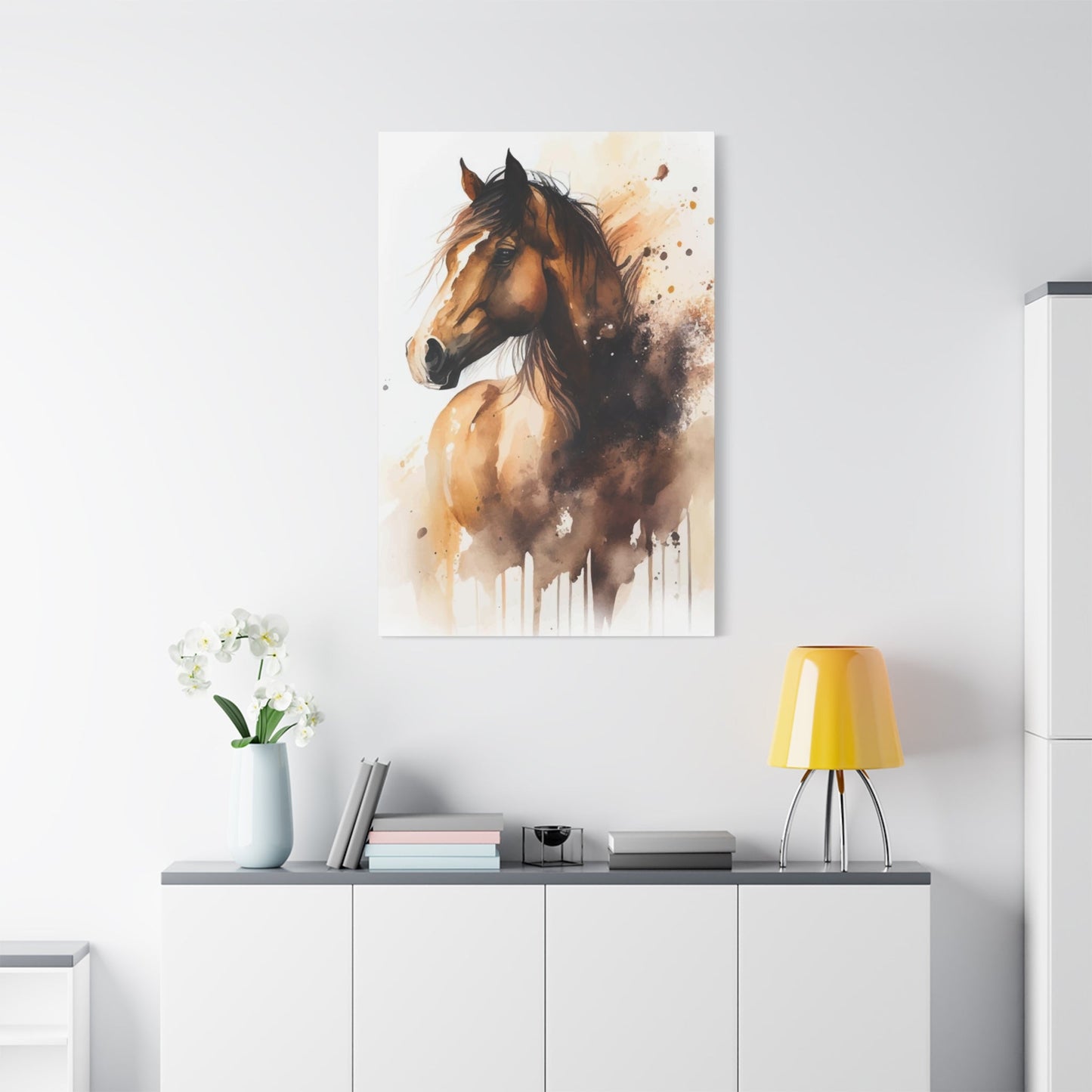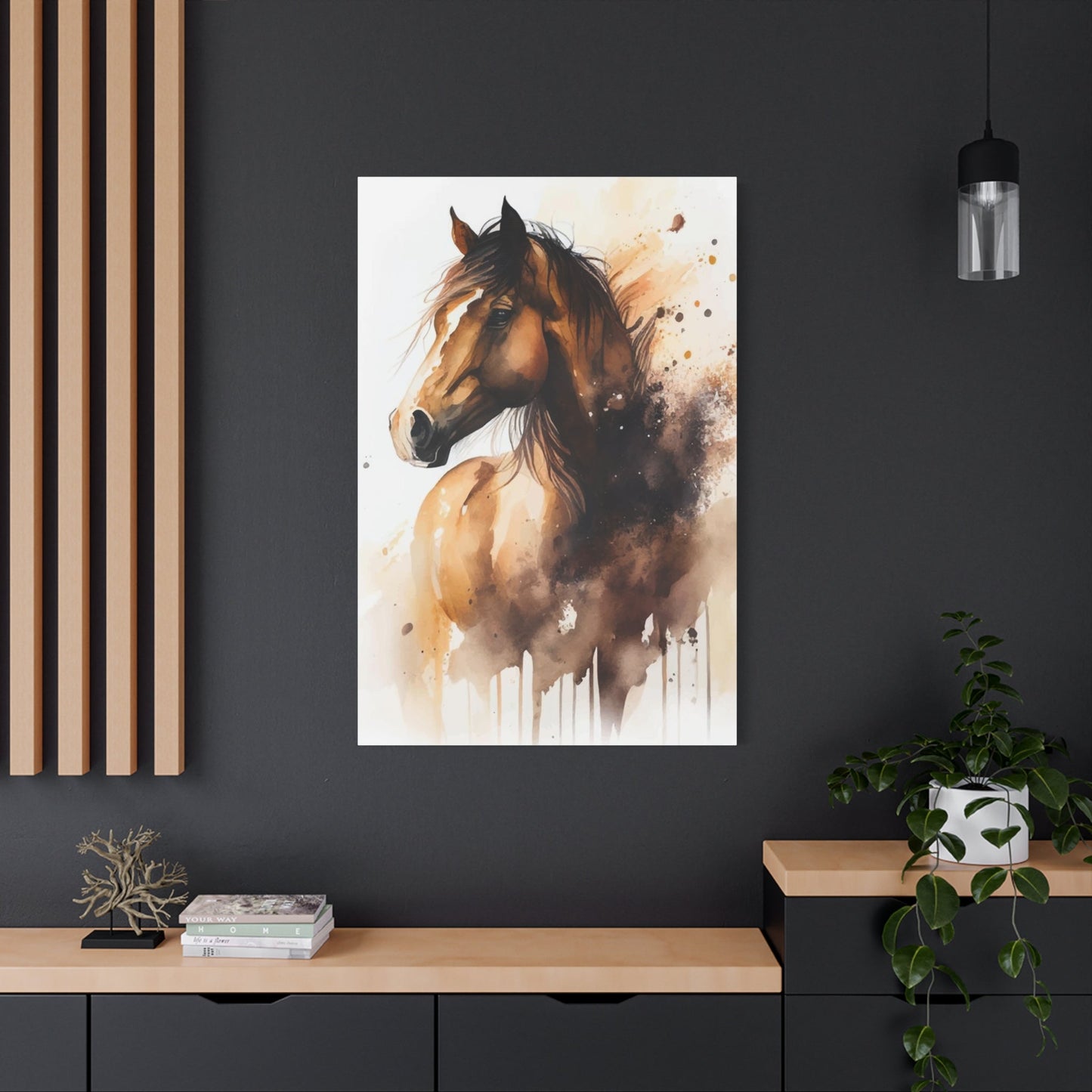Stunning Horse Watercolor Wall Art: Creative Ideas and Techniques for Every Room
Horse watercolor wall art represents one of the most captivating and versatile forms of artistic expression available to modern homeowners and art enthusiasts. These magnificent creatures, rendered in the fluid and ethereal medium of watercolor, bring a unique combination of strength, grace, and artistic sophistication to any environment. The translucent quality of watercolor paints creates an almost magical effect when depicting horses, allowing the natural beauty and spirit of these animals to shine through in ways that other mediums simply cannot achieve.
The popularity of equine-themed artwork has experienced tremendous growth in recent years, with watercolor renditions leading the charge due to their ability to capture both the power and gentleness inherent in horses. Whether you're drawn to the wild freedom of mustangs galloping across open plains or the refined elegance of dressage horses in competition, watercolor techniques can convey these emotions with remarkable depth and nuance.
This comprehensive exploration delves into every aspect of incorporating horse watercolor wall art into your living environment, from understanding the various artistic styles and techniques to practical considerations like framing, placement, and purchasing decisions. We'll examine how different color palettes can influence the mood of a room, explore the psychological impact of equine imagery, and provide detailed guidance on creating your own masterpieces.
The versatility of horse watercolor wall art extends far beyond simple decoration. These pieces can serve as conversation starters, emotional anchors, and sources of daily inspiration. They can complement virtually any decorative theme, from rustic farmhouse aesthetics to sleek contemporary designs, making them an excellent investment for anyone looking to enhance their living environment with meaningful artistic expression.
Elegant Horse Watercolor Wall Art
Elegance in horse watercolor wall art stems from the artist's ability to capture the inherent nobility and grace of these magnificent animals while utilizing the sophisticated medium of watercolor painting. The transparent layers of pigment create depth and luminosity that perfectly complement the natural beauty of equine subjects. When properly executed, elegant horse watercolor pieces possess a timeless quality that transcends fleeting decorative trends.
The concept of elegance in equine art often revolves around the portrayal of horses in their most refined states. This might include depictions of Arabian horses with their distinctive arched necks and flowing manes, Thoroughbreds captured mid-stride during a graceful canter, or draft horses shown in moments of quiet dignity. The watercolor medium enhances these qualities through its ability to create soft, flowing transitions between colors and its capacity for capturing subtle gradations of light and shadow.
Color choices play a crucial role in achieving elegance in horse watercolor wall art. Sophisticated palettes often feature muted earth tones, soft grays, warm browns, and gentle blues that create a sense of refinement and tranquility. These colors work harmoniously with the natural hues found in horse coats, from the deep chestnuts and rich bays to the silvery grays and cream-colored palominos. The interplay between warm and cool tones can create visual interest while maintaining an overall sense of sophistication.
Compositional elements contribute significantly to the elegant appeal of horse watercolor artwork. Artists often employ techniques such as negative space utilization, where areas of unpainted paper create highlights and add to the overall sense of lightness and grace. The positioning of the horse within the frame, the angle of the head, and the flow of the mane and tail all contribute to the piece's elegant character.
Brushwork techniques specific to watercolor painting enhance the elegant quality of equine subjects. Wet-on-wet applications create soft, dreamy backgrounds that allow the horse to emerge as the focal point, while controlled wet-on-dry techniques can be used to define precise anatomical details. The spontaneous nature of watercolor bleeding and blending can create happy accidents that add to the organic, elegant feel of the finished piece.
The size and format of elegant horse watercolor wall art can vary considerably, from intimate portrait-style pieces that invite close examination to large-scale works that command attention from across a room. Vertical orientations often emphasize the height and nobility of the horse, while horizontal formats can capture the dynamic movement and flow that epitomizes equine grace.
Elegant horse watercolor wall art works exceptionally well in formal living areas, master bedrooms, and professional environments where sophistication is paramount. These pieces can serve as statement artwork above mantels, in entryways, or as part of carefully curated gallery walls. The timeless appeal of elegantly rendered horses ensures that such artwork will remain relevant and appreciated for years to come.
Choosing Horse Watercolor Paintings
Selecting the perfect horse watercolor painting requires careful consideration of multiple factors, each contributing to how well the artwork will integrate with your existing environment and personal aesthetic preferences. The decision-making process involves evaluating artistic quality, subject matter, color compatibility, size requirements, and long-term appeal to ensure your investment brings lasting satisfaction and visual impact.
Artistic quality stands as the primary consideration when choosing horse watercolor paintings. Look for works that demonstrate technical proficiency in watercolor techniques, including proper color mixing, effective use of transparency, and skillful handling of wet-on-wet and wet-on-dry applications. The artist's understanding of equine anatomy becomes apparent in accurate proportions, realistic muscle definition, and natural movement depiction. High-quality pieces will show confident brushwork that enhances rather than detracts from the subject matter.
Subject matter selection depends largely on personal preference and the intended display location. Some individuals gravitate toward realistic portrayals that capture horses in natural settings, while others prefer more abstract interpretations that emphasize color, form, and emotional expression over literal representation. Consider whether you prefer single horse portraits that focus on individual character and personality, or dynamic scenes featuring multiple horses that convey action and narrative.
The emotional resonance of the chosen piece plays a significant role in long-term satisfaction. Some horse watercolor paintings evoke tranquility and contemplation through peaceful scenes of horses grazing or resting, while others capture excitement and energy through depictions of running, jumping, or playing horses. Consider how you want the artwork to make you feel each time you encounter it in your daily environment.
Color harmony between the painting and your existing decor requires thoughtful evaluation. Analyze the dominant colors in your room and identify how the painting's palette will interact with these elements. Warm-toned horse watercolor paintings featuring browns, oranges, and golds work well in rooms with similar warm color schemes, while cooler pieces with blues, grays, and purples complement contemporary or minimalist environments.
Scale and proportion considerations ensure the chosen artwork creates the desired visual impact without overwhelming or underwhelming the designated area. Large walls can accommodate substantial pieces that serve as focal points, while smaller areas benefit from more intimate works that invite closer examination. Consider the viewing distance and how the painting's details will be appreciated from various positions within the room.
The artist's reputation and style consistency can influence both current enjoyment and future value. Research the artist's background, training, and previous works to understand their artistic development and commitment to the medium. Established artists with consistent quality and recognizable styles often create works that appreciate in value over time, making them both aesthetically and financially rewarding investments.
Budget considerations should balance desired quality with financial constraints. Original watercolor paintings typically command higher prices than prints, but they offer unique characteristics and potential investment value. High-quality prints can provide excellent visual impact at more accessible price points, making horse watercolor wall art available to a broader range of enthusiasts.
Authentication and provenance become important factors when purchasing original works or limited edition prints. Ensure proper documentation accompanies significant purchases, including certificates of authenticity, edition numbers for prints, and any relevant background information about the piece's creation or exhibition history.
DIY Horse Watercolor Art Ideas
Creating your own horse watercolor wall art opens up endless possibilities for personal expression while developing valuable artistic skills and producing unique pieces perfectly tailored to your aesthetic preferences and room requirements. The DIY approach allows for complete creative control over subject matter, color choices, composition, and artistic interpretation while providing the satisfaction that comes from displaying your own handcrafted artwork.
Beginning your DIY horse watercolor journey requires assembling appropriate materials and establishing a suitable workspace. High-quality watercolor paper forms the foundation of successful paintings, with cold-pressed paper offering the ideal balance of texture and absorbency for most horse subjects. Invest in student-grade or artist-grade watercolor paints that provide good pigment saturation and mixing capabilities. Essential colors for horse painting include various browns, grays, blacks, and flesh tones, supplemented by blues and greens for backgrounds and shadows.
Brush selection significantly impacts your ability to achieve desired effects in horse watercolor painting. Round brushes in various sizes handle most applications, from broad washes to fine detail work. Flat brushes prove useful for creating textured effects in manes and tails, while small liner brushes enable precise work on facial features and other delicate elements. Natural hair brushes typically hold more water and pigment than synthetic alternatives, though quality synthetic brushes can produce excellent results at lower costs.
Reference material gathering forms a crucial step in the DIY process, as accurate horse anatomy and proportions require careful observation and study. Collect high-resolution photographs showing horses from various angles, paying attention to how light affects their forms and how different poses reveal muscular structure and movement patterns. Consider visiting local stables, horse shows, or equestrian facilities to observe horses in person and capture your own reference photos.
Compositional planning prevents common mistakes and ensures stronger finished pieces. Create small thumbnail sketches exploring different arrangements of your horse subject within the picture frame. Consider the rule of thirds, leading lines, and negative space utilization to create visually engaging compositions. Experiment with various viewpoints, from close-up portraits that emphasize character to full-body shots that showcase movement and grace.
Color mixing practice develops the skills necessary to achieve realistic horse coat colors and natural-looking backgrounds. Practice mixing various browns by combining burnt umber, raw sienna, and yellow ochre in different proportions. Learn to create convincing grays by mixing ultramarine blue with burnt umber or payne's gray with raw umber. Understanding how colors interact when wet helps predict and control watercolor behavior during painting.
Sketching techniques specific to horse subjects help establish proper proportions and anatomical accuracy before applying paint. Use light pencil marks to establish basic shapes and proportions, focusing on the relationship between the head size and body mass, leg proportions, and the characteristic curves of the horse's spine and neck. Keep initial sketches simple and focus on capturing the overall gesture and attitude rather than getting bogged down in details.
Watercolor application techniques for horse painting involve layering transparent washes to build form and depth gradually. Begin with light, warm washes to establish basic coat colors, then add successive layers to develop shadows and muscle definition. Use wet-on-wet techniques for soft background elements and smooth color transitions, while employing wet-on-dry methods for crisp edges and detailed features.
Texture creation methods help bring horse subjects to life through realistic rendering of manes, tails, and coat characteristics. Use dry brush techniques to suggest short coat hair, drag brushes loaded with paint across textured paper to create mane and tail effects, and employ salt, sponging, or masking techniques to add visual interest and variety to your paintings.
Problem-solving strategies help overcome common challenges in DIY horse watercolor painting. If paint appears too dark or muddy, try lifting color with a clean, damp brush or paper towel while the paint remains wet. Correct proportion issues by measuring relationships between different body parts and comparing them to your reference material. Address compositional problems by cropping or extending your painting boundaries or adding background elements to balance the overall design.
Finishing and preservation techniques ensure your DIY horse watercolor wall art maintains its appearance and value over time. Allow paintings to dry completely before handling or framing, protect finished works from direct sunlight and humidity fluctuations, and consider applying appropriate fixatives to prevent pigment degradation. Document your artistic progress through photographs and notes to track improvement and identify successful techniques for future reference.
Soft Colors in Horse Watercolor Art
Soft color palettes in horse watercolor wall art create atmospheres of tranquility, elegance, and subtle beauty that enhance rather than dominate their surroundings. These gentle hues work particularly well in bedrooms, nurseries, and other areas where peaceful ambiance takes precedence over bold visual statements. The inherent transparency of watercolor medium makes it perfectly suited for achieving the delicate color relationships that define soft palette artwork.
Understanding color temperature relationships becomes essential when working with soft horse watercolor palettes. Cool soft colors, including pale blues, lavender grays, and sage greens, create sense of calm and spaciousness while maintaining the dignified character of equine subjects. These colors work exceptionally well for depicting horses in misty morning scenes, peaceful pasture settings, or dreamy abstract interpretations that emphasize mood over literal representation.
Warm soft colors offer alternative approaches to gentle horse watercolor wall art, utilizing cream, pale peach, soft yellow, and muted rose tones to create inviting and nurturing atmospheres. These warmer palettes complement horses with lighter coat colors, such as palominos, cremellos, and gray horses, while also working effectively with darker subjects when used for background elements and atmospheric effects.
Monochromatic soft color schemes create sophisticated and unified looks in horse watercolor artwork. Various shades and tints of a single color family can produce remarkably diverse and interesting results while maintaining overall harmony. Blue monochromatic schemes might range from pale sky blue through medium cerulean to deeper navy accents, creating depth and visual interest while preserving the gentle character of soft color palettes.
Analogous color combinations use colors that sit adjacent to each other on the color wheel, creating natural harmony and visual flow in soft horse watercolor pieces. Blue-green combinations might include pale aqua, soft teal, and gentle sage, while red-orange analogous schemes could feature coral, peach, and cream tones. These relationships produce cohesive and pleasing results that work well in various decorative contexts.
Complementary soft colors, though seemingly contradictory, can create subtle tension and visual interest when handled with restraint and sensitivity. Soft orange and pale blue combinations, muted purple and gentle yellow pairings, or cream and lavender relationships add sophistication to horse watercolor wall art without creating harsh contrasts or overwhelming visual impact.
Pigment selection for soft color horse watercolor work requires understanding which paints naturally produce gentle effects versus those that need careful dilution to achieve desired softness. Natural earth pigments like raw sienna, yellow ochre, and raw umber typically mix into soft, natural-looking colors, while more intense pigments like cadmium yellow or ultramarine blue require significant water dilution to achieve soft effects.
Mixing techniques for soft colors emphasize gradual color development through multiple light layers rather than attempting to achieve desired intensity in single applications. This approach allows for greater control over color saturation and creates the luminous quality characteristic of successful soft color watercolor painting. Practice mixing colors on separate paper before applying them to your horse watercolor artwork to understand how they will appear when dry.
Background treatment in soft color horse watercolor wall art often determines the overall success of the gentle palette approach. Soft, graduated washes that transition from one gentle color to another create atmospheric backgrounds that support rather than compete with the horse subject. Cloud-like effects, subtle texture variations, and gentle color bleeding can add visual interest while maintaining the peaceful character of soft color work.
Contrast management becomes crucial when working with soft color palettes, as insufficient contrast can result in weak, washed-out appearances, while excessive contrast can destroy the gentle character you're trying to achieve. Use value relationships rather than intense colors to create necessary contrast, employing slightly darker versions of your soft colors for shadow areas and form definition.
Lighting considerations affect how soft colors appear in different environments and at various times of day. Natural daylight typically shows soft colors at their best, while artificial lighting can shift color relationships and overall appearance. Consider the primary lighting conditions where your horse watercolor wall art will be displayed when making color choices and intensity decisions.
Emotional impact of soft colors in horse watercolor wall art tends toward calming, nurturing, and contemplative responses. These gentle palettes work particularly well in healing environments, meditation areas, and personal retreat locations where stress reduction and emotional restoration are priorities. The combination of peaceful equine imagery with soft color palettes creates powerful tools for promoting relaxation and well-being.
Abstract Horse Watercolor Paintings
Abstract horse watercolor wall art offers exciting opportunities to explore creative expression beyond literal representation, allowing artists and viewers to experience equine subjects through color relationships, gestural brushwork, and emotional interpretation rather than precise anatomical rendering. This approach celebrates the essential spirit and energy of horses while utilizing watercolor's unique properties to create dynamic and engaging visual experiences.
Conceptual foundations of abstract horse watercolor work focus on capturing the essence of equine movement, power, and grace rather than documenting physical appearance. This might involve emphasizing the flowing curves of a galloping horse through bold brushstrokes, representing the strength and energy of these animals through vibrant color interactions, or suggesting the peaceful nature of grazing horses through gentle, organic shapes and soft color transitions.
Color relationships take on heightened importance in abstract horse watercolor paintings, as they must carry much of the emotional and visual impact without relying on realistic representation. Bold, contrasting colors can convey excitement and energy, while harmonious analogous schemes might suggest tranquility and natural rhythm. The transparency and flow characteristics of watercolor paints make them particularly well-suited for creating the spontaneous color interactions that define successful abstract work.
Gestural brushwork becomes a primary vehicle for expressing horse-related concepts in abstract watercolor painting. Broad, sweeping strokes might suggest the powerful movement of galloping horses, while delicate, flowing marks could represent the gentle swaying of manes and tails. The speed and pressure of brush application directly affects the character of marks, allowing artists to convey different aspects of equine nature through varied brushwork approaches.
Compositional strategies in abstract horse watercolor wall art often emphasize movement, rhythm, and visual flow over traditional pictorial balance. Dynamic compositions might use diagonal lines and angular shapes to suggest speed and power, while more contemplative pieces could employ gentle curves and organic forms to evoke peaceful pastoral scenes. The absence of literal representation allows for greater compositional freedom and creative exploration.
Layering techniques specific to abstract watercolor work can create complex visual relationships and depth without relying on traditional perspective or shading methods. Multiple transparent layers of color interact to produce new hues and create visual complexity, while selective lifting or masking can preserve lighter areas that suggest highlights or atmospheric effects. The unpredictable nature of watercolor bleeding and blending can contribute to the spontaneous quality that makes abstract work engaging.
Texture creation in abstract horse watercolor paintings might employ unconventional techniques such as salt application, alcohol drops, sponge texturing, or plastic wrap pressing to create interesting surface effects that suggest various aspects of the equine world. These textures might represent coat patterns, environmental elements, or simply add visual interest and complexity to the abstract composition.
Scale considerations for abstract horse watercolor wall art can range from intimate pieces that reward close examination to large-scale works that create powerful environmental impact. Large abstract pieces can serve as dramatic focal points in contemporary settings, while smaller works might function as part of series or groupings that explore related themes and variations.
Symbolic elements in abstract horse watercolor work allow for personal interpretation and emotional connection beyond literal representation. Colors, shapes, and mark-making can represent concepts such as freedom, strength, gentleness, or wild nature, creating artwork that communicates on multiple levels and invites viewer participation in meaning-making.
Series development offers opportunities to explore abstract horse themes through multiple related pieces that can be displayed together or separately. A series might explore different aspects of horse movement, various emotional states associated with equine subjects, or seasonal changes in horse environments. Working in series allows for deeper exploration of abstract concepts while creating opportunities for larger-scale display options.
Mixed media possibilities expand the range of effects achievable in abstract horse watercolor wall art. Combining watercolor with ink, colored pencils, pastels, or collage elements can add texture, linear quality, or conceptual depth that pure watercolor alone might not achieve. These combinations should enhance rather than overwhelm the watercolor elements while maintaining overall unity and coherence.
Contemporary relevance of abstract horse watercolor painting connects with current interests in expressive art, emotional wellness, and personal interpretation. These works can function as meditation focuses, conversation starters, or simply as sources of daily inspiration and beauty. The non-literal nature of abstract work allows viewers to bring their own experiences and emotions to the interpretation process, creating personal and meaningful connections with the artwork.
Framing Tips for Horse Watercolor Art
Proper framing serves as the crucial final step in presenting horse watercolor wall art, protecting the artwork while enhancing its visual impact and ensuring its longevity. The framing choices you make can dramatically affect how your watercolor painting is perceived, either supporting and complementing the artistic vision or detracting from its inherent beauty and emotional impact.
Mat selection forms the foundation of effective horse watercolor framing, providing visual breathing room around the artwork while protecting it from direct contact with the frame glass. Choose mat colors that complement rather than compete with your horse watercolor painting. Neutral colors such as cream, off-white, or soft gray work well with most horse subjects, while more adventurous choices might echo colors found within the painting itself for enhanced unity.
Mat sizing considerations affect the overall proportion and visual weight of your framed horse watercolor wall art. Wider mats create more formal, gallery-like presentations that work well with sophisticated or detailed paintings, while narrower mats provide more intimate, casual appearances suitable for smaller pieces or informal display areas. Consider the scale of your room and surrounding elements when determining appropriate mat proportions.
Double matting techniques can add depth and visual sophistication to horse watercolor framing while providing additional protection and support. The outer mat typically uses a neutral color, while the inner mat might pick up a subtle color from the painting or provide gentle contrast. The inner mat should be narrower than the outer mat, creating a stepped effect that adds dimension and visual interest.
Frame material choices affect both the aesthetic impact and protective qualities of your horse watercolor presentation. Wood frames offer warmth and natural appeal that complements horse subjects particularly well, while metal frames provide contemporary, clean lines suitable for modern settings. Consider the style of your horse watercolor painting when selecting frame materials, ensuring harmony between the artwork's character and the frame's appearance.
Frame color relationships should support rather than dominate the horse watercolor artwork. Natural wood tones work exceptionally well with earth-toned horse paintings, while painted frames in black, white, or other neutral colors provide versatile options that work with various color schemes. Avoid frames that are too bold or colorful unless they specifically enhance the painting's overall impact.
Glass selection provides crucial protection for watercolor paintings while affecting viewing quality and reflection control. Regular picture frame glass offers basic protection at economical cost, while museum-quality glass provides superior clarity and UV protection that helps prevent fading and deterioration over time. Anti-reflective glass reduces glare and reflections that can interfere with artwork appreciation.
UV protection becomes particularly important for horse watercolor wall art, as the delicate pigments used in watercolor painting can fade or shift when exposed to direct sunlight or intense artificial lighting. UV-filtering glass or acrylic glazing materials can significantly extend the life and appearance of your watercolor artwork while maintaining visual clarity and color accuracy.
Spacing considerations ensure adequate air circulation around the watercolor painting while preventing condensation problems that can damage the artwork. The mat provides necessary separation between the painting and glazing material, while proper sealing of the frame back prevents moisture infiltration and pest intrusion that could compromise the artwork's condition.
Mounting techniques for horse watercolor paintings must balance secure attachment with preservation concerns, avoiding methods that could damage the paper or prevent future conservation efforts if needed. Archival mounting methods use acid-free materials and reversible attachment techniques that support the artwork without causing permanent altereration or potential damage.
Hanging hardware selection affects both the security and adjustability of your framed horse watercolor wall art. Use appropriate wall anchors for the frame weight and wall type, ensuring secure attachment that can support the piece safely over time. Consider adjustable hanging systems that allow for easy repositioning or replacement without wall damage.
Environmental considerations for displaying framed horse watercolor wall art include avoiding direct sunlight, maintaining stable temperature and humidity levels, and protecting the artwork from physical damage or contamination. Choose display locations that minimize exposure to potentially damaging conditions while maximizing visual impact and viewing enjoyment.
Professional framing services can provide expertise and specialized materials that ensure optimal presentation and protection of valuable horse watercolor artwork. Experienced framers understand conservation principles, material compatibility, and design aesthetics that can enhance your artwork's appearance while preserving its long-term condition and value.
Where to Buy Horse Watercolor Wall Art
Finding high-quality horse watercolor wall art requires exploring various sources, each offering different advantages in terms of selection, pricing, authenticity, and customer service. Understanding the characteristics of different purchasing venues helps ensure you find pieces that meet your quality expectations, budget requirements, and aesthetic preferences while avoiding common pitfalls associated with art acquisition.
Art galleries represent traditional venues for purchasing original horse watercolor paintings and often provide the advantage of seeing artwork in person before making purchasing decisions. Gallery staff typically possess knowledge about featured artists, artistic techniques, and current market values that can inform your buying decisions. Many galleries also offer framing services and can provide authentication documentation for significant purchases.
Online marketplaces have revolutionized art purchasing by providing access to vast selections of horse watercolor wall art from artists and dealers worldwide. These platforms often feature detailed photographs, artist biographies, and customer reviews that help evaluate potential purchases. However, the inability to see artwork in person before buying requires careful attention to return policies, seller reputation, and image quality representation.
Artist websites and studios offer direct purchasing opportunities that often provide the best prices while supporting artists directly. Many watercolor artists maintain online galleries showcasing their horse-themed work, complete with pricing information, commission availability, and shipping details. Purchasing directly from artists can also provide opportunities for custom work tailored to your specific requirements and preferences.
Art fairs and exhibitions provide excellent opportunities to view multiple artists' work in person while often offering more favorable pricing than traditional gallery settings. Many horse and equestrian events feature art exhibitions that focus specifically on equine subjects, providing concentrated selections of relevant artwork. These venues also offer opportunities to meet artists personally and discuss their work, techniques, and availability for custom commissions.
Auction houses occasionally feature horse watercolor paintings, particularly those by established or historical artists. While auctions can provide opportunities to acquire valuable pieces at competitive prices, they also require knowledge of market values, condition assessment skills, and comfort with competitive bidding processes. Preview opportunities allow examination of artwork condition and authenticity before bidding.
Print-on-demand services offer affordable access to horse watercolor wall art through high-quality reproduction methods. These services can produce custom sizes and framing options while offering extensive catalogs of available images. While these prints lack the uniqueness and potential investment value of original artwork, they provide excellent decorative options at accessible price points.
Local artists and art associations often feature members working in watercolor who may specialize in or be willing to create horse subjects. These local connections can provide opportunities for custom work, competitive pricing, and ongoing relationships that benefit both artist and collector. Community art centers, colleges, and art schools can provide referrals to qualified local artists.
Specialty equestrian retailers sometimes feature horse-themed artwork as part of their merchandise selection. While these venues may not focus primarily on fine art, they often carry pieces specifically designed to appeal to horse enthusiasts and may offer competitive pricing on decorative options. Quality can vary significantly in these settings, requiring careful evaluation of artistic merit and material quality.
Estate sales and consignment shops occasionally yield interesting horse watercolor discoveries, though finding specific subjects requires patience and regular searching. These venues can provide opportunities to acquire older or vintage pieces at favorable prices, though authentication and condition assessment become particularly important when buying from non-specialist sources.
Custom commission services allow for personalized horse watercolor wall art created specifically for your requirements and preferences. Many watercolor artists accept commissions for horse portraits, landscapes, or other equine subjects, providing opportunities to incorporate specific horses, colors, sizes, or compositional elements that perfectly match your needs and environment.
International sources expand the available selection of horse watercolor wall art while potentially offering unique cultural perspectives on equine subjects. European artists, in particular, have strong traditions in both equestrian art and watercolor painting. However, international purchases may involve additional costs for shipping, customs duties, and currency exchange, along with potential complications regarding returns or disputes.
Authentication considerations become increasingly important when purchasing higher-value horse watercolor artwork. Look for proper documentation, including certificates of authenticity, provenance information, and artist signatures or stamps. Be particularly cautious of deals that seem too good to be true, as the art market unfortunately includes fraudulent and misrepresented pieces.
Horses in Motion: Watercolor Styles
Capturing horses in motion through watercolor techniques presents unique artistic challenges while offering opportunities to create dynamic and emotionally engaging wall art. The fluid nature of watercolor paints naturally complements the flowing movement of horses, allowing artists to suggest speed, power, and grace through brushwork, color application, and compositional choices that celebrate the kinetic energy of these magnificent animals.
Galloping horses represent perhaps the most dramatic and challenging subjects for watercolor motion studies. The extended stride, flying manes, and powerful muscle engagement of galloping horses require careful observation and confident brushwork to capture convincingly. Successful galloping horse watercolors often employ bold, sweeping brushstrokes that follow the direction of movement while using color temperature shifts to suggest the play of light across moving forms.
Wet-on-wet techniques prove particularly effective for suggesting the blur and energy associated with horses in rapid motion. By applying paint to damp paper or into wet color areas, artists can achieve the soft edges and color bleeding that naturally suggest movement and atmospheric effects. This technique works especially well for background elements and secondary forms that support the main subject without competing for attention.
Cantering horses offer slightly more controlled motion subjects that allow for greater detail while still conveying significant movement and energy. The characteristic three-beat gait creates distinctive body positions and weight distributions that watercolor artists can emphasize through careful attention to anatomical accuracy and dynamic composition. The rhythmic quality of the canter can be suggested through repeated brushwork patterns and color relationships.
Jumping horses present opportunities to capture moments of suspension and power that create particularly dramatic watercolor subjects. The compressed energy of the takeoff, the extended form during flight, and the controlled landing phases each offer different artistic possibilities. Watercolor's ability to suggest form through transparent layers works well for depicting the muscle tension and athletic ability required for jumping.
Rearing horses create vertical compositions that emphasize the power and majesty of these animals while presenting unique balance and proportion challenges. The dramatic upward thrust of the front legs, the arched neck, and the flowing mane create strong visual lines that watercolor techniques can enhance through directional brushwork and strategic color placement.
Running water techniques in watercolor can effectively suggest the speed and fluidity of horse movement. By using horizontal brush drags, graduated washes, and strategic lifting of wet color, artists can create backgrounds and atmospheric effects that reinforce the sense of motion in the horse subject. These techniques work particularly well for depicting horses running across landscapes or through environmental elements.
Color temperature manipulation enhances the perception of movement in horse watercolor wall art. Warm colors tend to advance visually while cool colors recede, creating depth and spatial relationships that support movement interpretation. Strategic use of warm highlights on the horse's body combined with cooler shadow areas can model form while suggesting the effects of light on moving subjects.
Brushwork direction plays a crucial role in conveying horse movement through watercolor techniques. Strokes that follow the direction of movement enhance the kinetic quality of the image, while cross-directional marks can be used strategically to create contrast and visual interest. The spontaneous quality of confident brushwork naturally complements the energy and freedom associated with horses in motion.
Compositional strategies for horses in motion often employ diagonal lines, dynamic balance, and strategic cropping to enhance the sense of movement and energy. Placing the horse off-center and allowing parts of the animal to extend beyond the picture frame can create visual tension that suggests continued motion beyond the confines of the artwork.
Sequential movement studies provide opportunities to explore different phases of horse gaits and movements through series of related watercolor paintings. These series can examine the mechanics of walk, trot, canter, and gallop cycles while creating opportunities for larger-scale display options. Sequential studies also allow artists to develop their understanding of equine movement through repeated observation and rendering.
Abstract movement interpretation offers alternatives to literal representation of horses in motion, focusing on the essential energy and flow rather than accurate anatomical depiction. These approaches might emphasize color relationships, gestural brushwork, and compositional dynamics to convey the feeling of movement without detailed horse representation.
Environmental integration enhances horse movement watercolors by providing contextual elements that support and reinforce the sense of motion. Windblown grasses, flying dirt or sand, streaming water, or atmospheric effects like mist or dust clouds can all contribute to the overall kinetic quality of the artwork while adding visual interest and narrative elements.
Minimalist Horse Watercolor Paintings
Minimalist horse watercolor wall art embraces the principle that artistic impact can be achieved through reduction rather than addition, focusing on essential elements while eliminating unnecessary details that might distract from the core emotional or visual message. This approach particularly suits watercolor techniques, as the medium's inherent transparency and flow characteristics naturally support simplified, elegant representations.
Essential form reduction in minimalist horse watercolor work involves identifying and preserving only the most crucial elements needed to convey the equine subject effectively. This might mean suggesting a horse's presence through just a few carefully placed brushstrokes that capture the curve of the neck, the line of the back, or the characteristic angle of the head. The challenge lies in determining which elements are truly essential and which can be eliminated without losing the subject's identity.
Negative area utilization becomes a primary compositional tool in minimalist horse watercolor paintings, where unpainted paper serves as an active design element rather than simply empty background. The relationship between painted and unpainted areas creates visual tension and helps define forms through implication rather than direct representation. Strategic use of negative areas can suggest light, atmosphere, and spatial relationships with remarkable efficiency.
Color palette limitations define much minimalist horse watercolor work, often employing monochromatic schemes or restricted color relationships that emphasize unity and simplicity over variety. A painting might use only various tones of blue-gray, different values of sepia, or gradations of a single color family to create a complete and satisfying image. These limitations force artists to explore value relationships and subtle color variations more thoroughly.
Brushwork economy characterizes successful minimalist horse watercolor techniques, where each mark must serve multiple purposes and contribute meaningfully to the overall image. Single brushstrokes might simultaneously define form, suggest movement, and create textural interest. The confidence and precision required for economical brushwork demands thorough understanding of both watercolor behavior and horse anatomy.
Gestural quality becomes heightened in minimalist horse watercolor wall art, as the reduced number of marks means each gesture carries greater visual weight and importance. A single confident stroke suggesting a horse's mane or the curve of a neck must capture not just the physical form but also the energy and character of the subject. This emphasis on gesture connects minimalist watercolor work with traditions of Asian brush painting.
Atmospheric suggestion through minimal means requires understanding how watercolor's transparency and blending characteristics can imply environmental conditions, lighting effects, and spatial relationships without explicit rendering. A light wash might suggest morning mist, graduated color could imply distant landscapes, or strategic water application might create cloud-like effects that place the horse subject in context.
Scale relationships in minimalist horse watercolor work often emphasize the dramatic impact that can be achieved through careful proportion and placement decisions. A small, simply rendered horse silhouette might dominate a large paper format through strategic positioning and surrounding negative area, creating powerful visual presence through restraint rather than elaboration.
Emotional directness results from the elimination of decorative or superfluous elements that might interfere with the core emotional message of minimalist horse watercolor paintings. Without complex backgrounds, detailed rendering, or multiple compositional elements competing for attention, the viewer can connect more directly with the essential character or mood the artist wishes to convey.
Final Thoughts
Stunning horse watercolor wall art brings a unique blend of grace, movement, and natural beauty into any living space. The fluidity and softness of watercolor perfectly capture the majestic spirit of horses, conveying their strength, freedom, and elegance in a way that feels both vibrant and serene. Whether displayed in a living room, bedroom, or even a hallway, these artworks add a timeless, artistic touch that complements a wide range of décor styles.
One of the greatest appeals of horse watercolor art lies in its versatility. The gentle blending of colors and transparent washes create a sense of lightness and airiness, making it suitable for both minimalist modern interiors and more traditional or rustic settings. The subject matter—horses in motion, grazing peacefully, or portrayed in close-up detail—offers endless creative possibilities that evoke different moods, from dynamic energy to calming tranquility.
Incorporating horse watercolor pieces into your décor allows for creative freedom in styling. Pair these artworks with natural materials like wood, linen, or leather to emphasize an earthy, organic feel, or contrast their softness with sleek metal or glass accents for a contemporary edge. Their often neutral and pastel color palettes also make it easy to coordinate with existing furnishings, while bold, vibrant watercolors can serve as eye-catching focal points.
Beyond their aesthetic charm, horse watercolor wall art symbolizes freedom, strength, and a deep connection to nature. These qualities resonate emotionally, offering a peaceful and inspiring presence in your home.
Ultimately, stunning horse watercolor wall art is a perfect way to celebrate the beauty of the natural world while enhancing your interior with creativity and elegance. Whether you’re an equestrian enthusiast or simply appreciate fine art, these pieces bring movement, life, and heartfelt artistry to every room.













